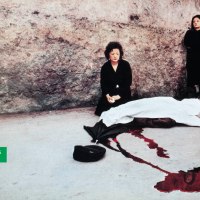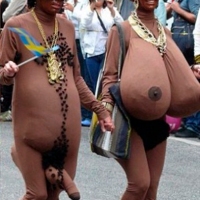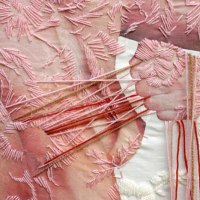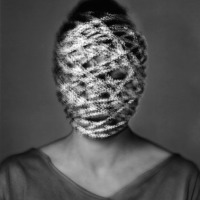Somehow Max Pinckers‘ work has never excited me much. I though it was too neat, too contrived, too pretty, too arranged, too controlled… After coming across a feature of Magnum Photos Now about Finding Your Documentary Photography Style and reading the words he chose to describe his approach to documentary photography, I went back to some of his projects. I see now what I had missed before: mainly, that the way he resorts to staging is a strategy to expose the contamination between what is ordinarily understood as facts and fiction.
In that article, author Laura Havlin writes that Pincksers’ thinking began to develop around questions of authenticity and goes on to quote his words: I’ve always been questioning, as a maker or as a photographer, the relationship with the subject matter and the images produced, and how far can they actually convey a form of truth.
Pinckers’ project Lotus, created in collaboration with visual artist Quinten De Bruyn, comes up as the example of how he questions the creation of a style in the context of documentary photography. Lotus is a project about Thailand’s transgender community, but it is also a vehicle to explore the very medium of photojournalism itself, so Havlin says.
What we were really interested in, says Pinckers, was the kind of thought behind why certain aesthetics are applied in documentary photography or photojournalism. What are the motivations behind making certain aesthetic choices when you’re actually there to report on a certain subject matter? Why do documentary images need to be pretty or beautiful or nice to look at? Even if the subject matter might be completely in conflict with this aesthetic? We chose Thailand’s Ladyboys because they have also gone through some kind of transformation; they have plastic surgery and turn from looking like a man to looking like a woman. You walk through the streets and sometimes you’re not quite sure if you are looking at a man or a woman. This is interesting because that’s exactly what we wanted to convey with our images as well: the viewer questions the authenticity of what they are looking at.
When Pickers goes on to describe how he and Bruyn worked on Lotus, at some point he says that the photographs depict spontaneous moments in the middle of very worked out sceneries, once again mistaking spontaneity for authenticity. His exact words are: All of a sudden, they started chatting to each other or would get up to go to the bathroom and then we would take the picture right at the moment when something spontaneous happened. We wanted to to achieve this very stylized, theatrical photographic aesthetic but at the same time capture something that we might not be able to direct or stage.
Although I obviously question his theoretical approach on authenticity, I wouldn’t dare doubt his choices, his approach, his quest for his originality, his own language, for he has managed to achieve a style. On the other hand, I miss a soul. It’s as if the photographs were imprisoned in their conditioned of being a photograph, not being able to take the plunge into an autonomous aesthetic dimension. I see the effort to trigger less controlled moments amidst the staging, as if the spontaneity of those untamed gestures could bring about some authenticity. But authenticity in what sense? Truth about the people and the environment they are photographing? You think?
What follows is a selection of photographs from the project Lotus.
Photogrphas appear as they are in Pinckers’ site, without subtitles.






















